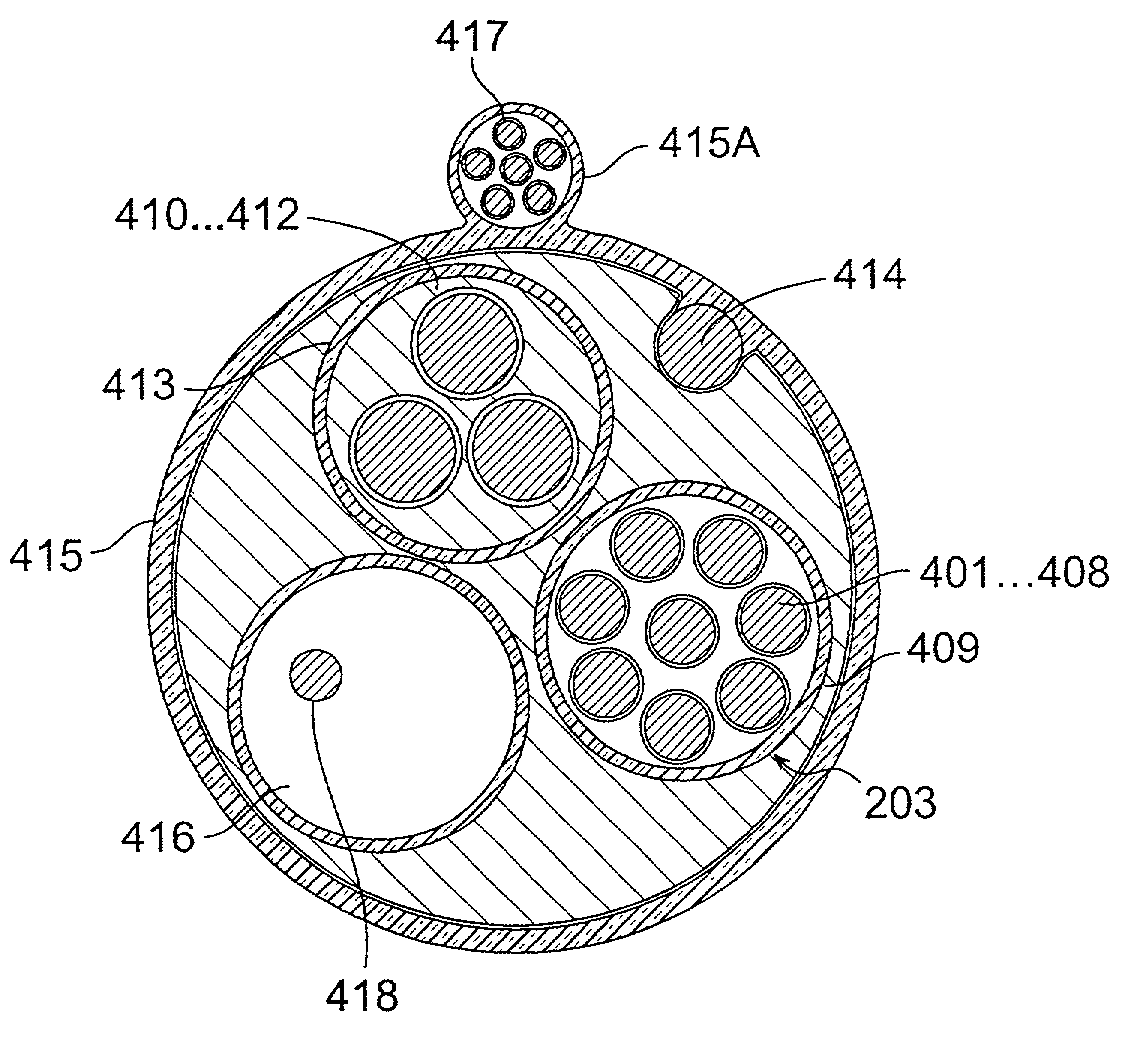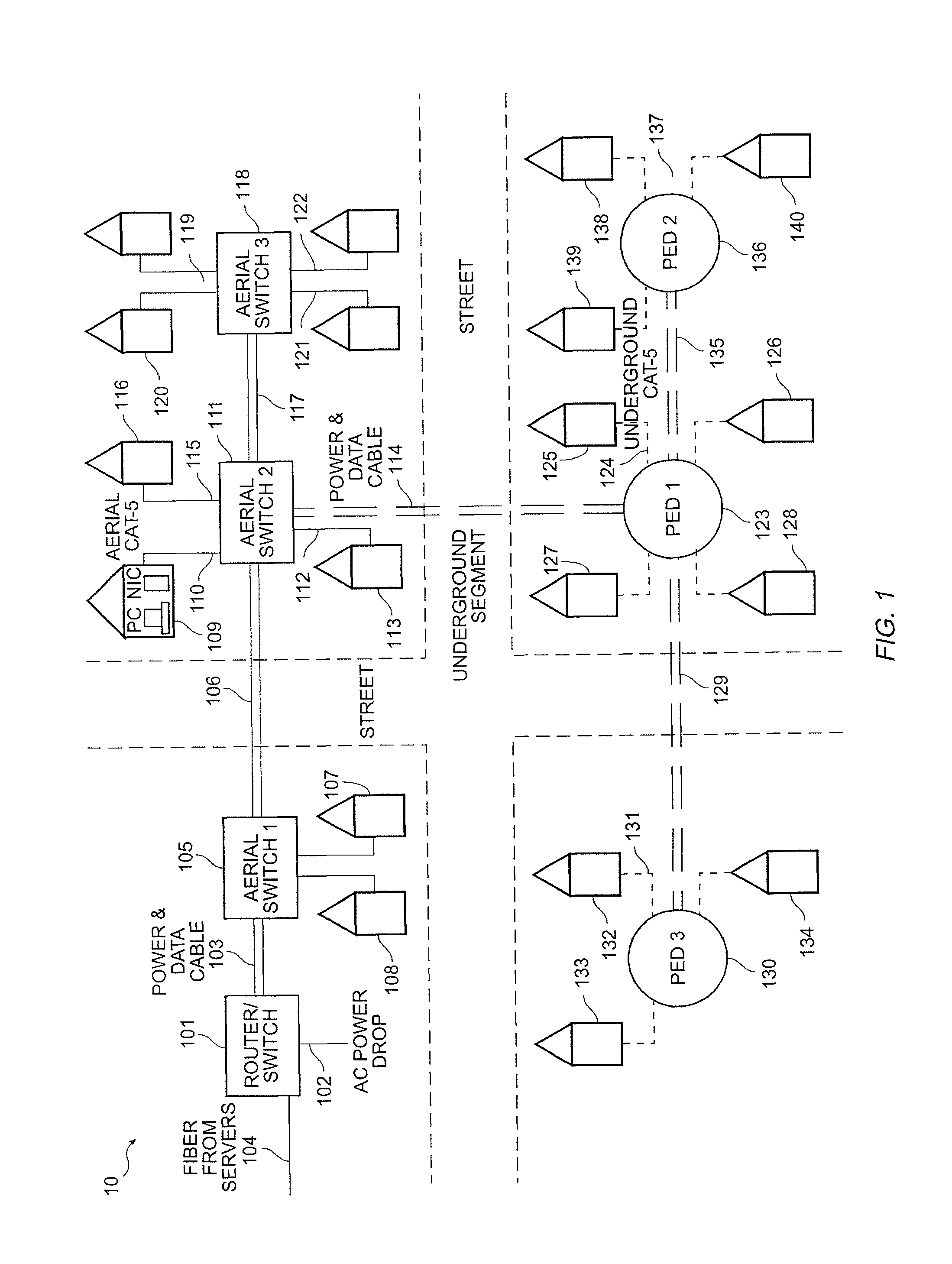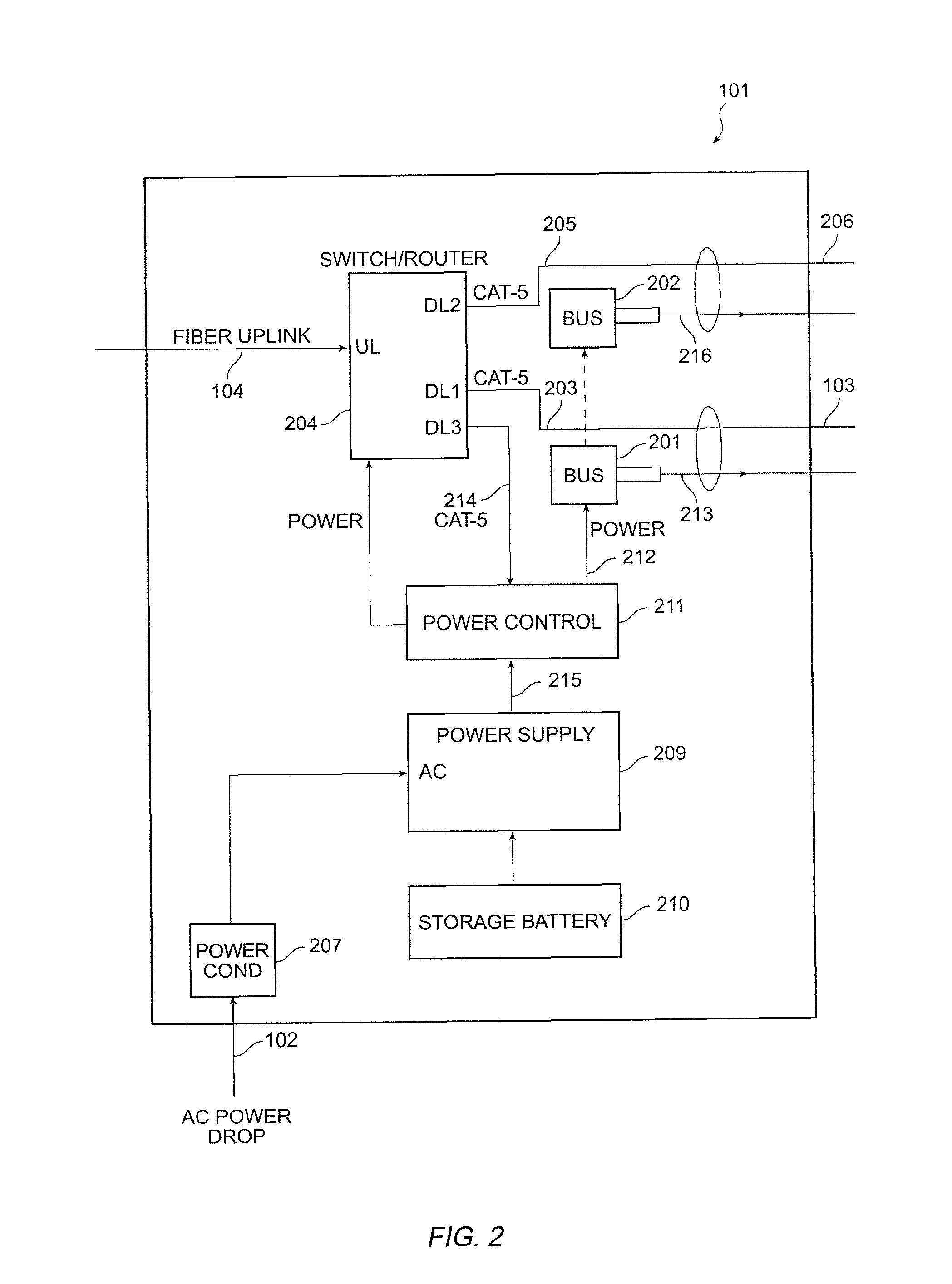Method and apparatus for an environmentally hardened ethernet network system
a network system and environment-friendly technology, applied in the direction of cable laying apparatus, data switching network, waveguide, etc., can solve the problems of limiting the design transmission distance, the cost of fiber cable termination and outdoor installation is much higher, and the fiber cable has much higher capital and outdoor installation costs to protect the delicate fibers, so as to avoid the limitation of the distance between the csma/cd protocol and the extension of the rang
- Summary
- Abstract
- Description
- Claims
- Application Information
AI Technical Summary
Benefits of technology
Problems solved by technology
Method used
Image
Examples
Embodiment Construction
[0022]FIG. 1 is a diagram of an environmentally hardened network, herein a NAN system 100, that integrates both data and power distribution function. A NAN Distribution box 101 contains a switch or, if enhanced, a router for connecting to a larger environmentally hardened ETHERNET network. It is assumed that there is a network operation center (NOC) (not shown) providing various network services via ETHERNET protocols. This distribution may be via fiber cabling 104, for example, The NAN fiber uplink cable 104 could also be part of a routed fiber loop running gigabit Ethernet or other high-speed fiber protocols. Distribution box 101 may be powered by AC power drop 102 that sources metered AC power (115 / 230V AC in the US) from a utility company service line or generator. Distribution box 101 supplies power and data through a cable 103 according to the invention to at least one distribution segment of the NAN, as illustrated. NAN cable 103 carries data and power to the uplink port of a...
PUM
 Login to View More
Login to View More Abstract
Description
Claims
Application Information
 Login to View More
Login to View More - R&D
- Intellectual Property
- Life Sciences
- Materials
- Tech Scout
- Unparalleled Data Quality
- Higher Quality Content
- 60% Fewer Hallucinations
Browse by: Latest US Patents, China's latest patents, Technical Efficacy Thesaurus, Application Domain, Technology Topic, Popular Technical Reports.
© 2025 PatSnap. All rights reserved.Legal|Privacy policy|Modern Slavery Act Transparency Statement|Sitemap|About US| Contact US: help@patsnap.com



